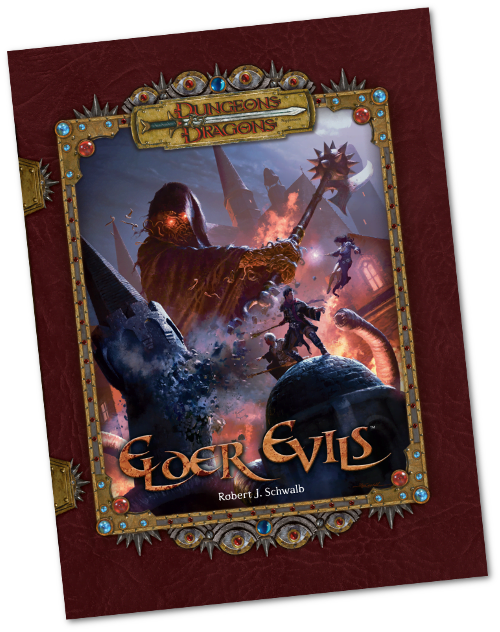Part of the challenge in finding horror topics for this month has been finding game related things that I found actually legitimately horrifying. Things that I found creepy, things that I found that were capable of giving me that prickle on the skin, rather than just wearing the trappings of the horrific. There are lots of horrifying videogames, lots of games that want to be horrifying, but so few of them really make me feel it.
Let me show you then, the book that heralded the end of the world for 3.5 D&D, and went out with a howl.
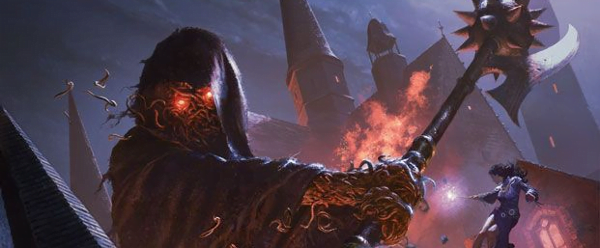
Elder Evils is a pretty simple concept for a book. It’s about campaign-ending monsters – not the endless, spiralling scaling of the Epic Level Handbook, but rather about seeing the story of any given D&D campaign as needing an end, and wanting an end that was appropriately massive and impressive. To that end, this book presented you with nine elder evils, things that are so massive that their defeat is the kind of thing that ends a whole story, with a world changed for the process and the underpinning theme of what makes this a good villain for your story.
There are only nine centerpiece monsters in the book – and, largely, that’s all the book is – there’s a tiny bit of mechanical information for the traits of this type of monster, some feats for making the monster’s cultists interesting, and then it’s off to the races with a really robust, simple structure; the origin of the monster, the goals of the monster, then the arc of how that monster’s slow coming to fruition could express itself through a campaign. Sometimes this means seeing an NPC who starts out fresh-faced and hopeful, slowly falling to despair and eventually betraying the party. Sometimes this is about watching as conflicting forces still bring each other into conflict, despite the player’s efforts. Sometimes it’s about discovering a mystery and sometimes it’s about stopping those who think they have. These are all good story structures, and the book has a good handle on how to make its simple, arch, incredibly evil enemies into things that a human-sized story can deal with.
These timelines are honestly some of the best content in the book, if a bit ambitious, considering this book launched four months before the end of 3rd edition with the notion that this was how you ended a 3rd edition campaign, so suggesting you could get a twenty-level campaign in that middling time suggested an… impressive pace, I gotta say.

Dungeons and Dragons is a product. It’s part of our lifestyles, sure, but forgetting the ways in which D&D is a product, designed to be purchased and consumed for an optimal cost leads to strangeness. It creates tribal fractures where there really doesn’t need to be any – you like 4ed? I like 3ed, that’s fine, good luck with your purchases. It’s why the game had its ferocious release schedule, pretty consistantly getting faster ever since markets grew.
Original D&D had four supplemental products, released over two years. Basic had thirty supplements over eighteen years. Third edition was where the production rate exploded, and in 4ed, it was basically two releases every month, with the (hopeful) idea that the market would bear that kind of release schedule, especially if the books were a (little bit) cheaper. I have been part of this product life cycle, and some of the books I have bought have been absolute favourites. Some of them are from versions of the game I basically never played – I own the 2nd edition era book The Illithiad and the Planescape book The Faces Of Evil: The Fiends, which are wonderfully dense with world-building and lore, have the hilarious voice of Xanxos the Blue Slaad, and are dotted throughout with lovely Tony DiTerlezzi art. These are books whose purpose was to build the world of a setting I don’t play in and can’t use – heck, I don’t want to use them.
These are rare though. Because the bulk of any given D&D book is going to feature mechanical information, stuff that anchors it to one specific time and place, to try and make it part of the vertically integrated line of product. 3.5 and 3.0 books were dense with this, with sometimes as much as a third of the book going unread because it wasn’t the prestige classes, feats and other character options that we filthy players wanted to get our hands on. The Book of Vile Darkness (which I’m not talking about today) was pawed over explicitly for its mechanical information, despite it being there as a DM tool.
Elder Evils has a lot of mechanical information in it. It has to, it’s got a range of monster encounters that are meant to be the boss battles that end a campaign, a whole range of dungeons that represent the endgame of major plots. Yet even when you set that aside, the fundamental storytelling mechanisms at the root of each of these stories are great ideas for boss monsters that you can weave through the long-term plot of a campaign.
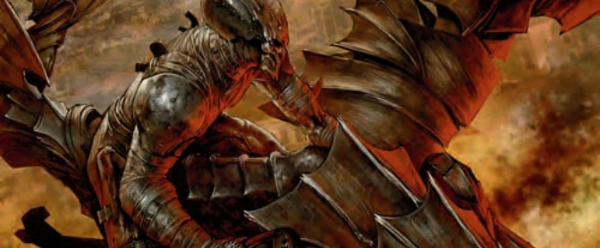
So why do I want to talk to you about this book, in this, in the spookiest of months?
I think a large part of why is because the monsters of Elder Evils are genuinely, genuinely terrifying, in their own ways. They each are designed around fairly interesting ideas, and those ideas are all world-threatening problems, ranging from human ambition driven mad, to out of context alien threats, threats that you can’t see coming or be prepared for, and have to come up with solutions on the spot.
The threats all, to me, feel scary. There’s a lovecraftian horror that actually feels Lovecraftian, with its alien geometry and its breaking of conventional rules. There’s a weapon of mass destruction that’s sentient and wants to break free. There’s a rumour from an ancient city’s fallen cult, which it turns out isn’t what you’d expect and is somehow so much worse. There’s even a creature that represents merely the angry ocean, or the idea of horrific ever-abundant life. The one that I feel is the most ‘handleable’ is still a pile of maggots that can eat the flesh off your bones as it punches you, and that brings with it a hideous vision of what dying in these conflicts is even like.
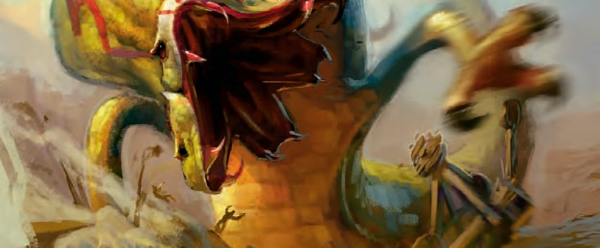
I think part of it is that I’m just sensitive to apocalyptic imagery, and this book actually makes for an apocalypse. It’s not the way of ‘saving the world’ in a movie like the Avengers, where there world is represented by six streets in a city nowhere like anywhere I know. It’s not like Death Note where they talk about the world changing because of two dozen criminals dying. This is apocalpytica where cities fall and thousands die and armies stomp across blasted deserts and you, a single human who can work and fight on that scale have to actually address those challenges.
One of the problems this book gives you is surviving in a vacuum on the surface of a planet that’s radiating endless negative energy. I find wonderful as both a very D&D challenge (‘do we have Death Ward spells’) and a very not D&D challenge (how do we believably make space suits with magic-level tech). That planet is also a drifting, Unicorn-style head that is itself the first undead created by the act of the universe itself, a sort of antimatter star that populates worlds it passes with the undead. Its arrival starts to change the stars, and it takes months to arrive as players adventure and quest and grow, all the while watching their world getting more and more populated by the undead.
The scale of a D&D 3.5 campaign, at its end, is pretty terrifying. You have the infamous scry-and-die problem, where a group of adventurers could turn into Seal Team Hex and teleport into a space, kill the boss while they were unprepared, then get out. These campaigns deal with that, with end-game scenarios where getting there and fighting in is boring, but finding the thing is hard. This means that players get to feel like a strike force of super-adventurers, but when they get where they’re going, they’re still fighting big problems which can sometimes need weird solutions.
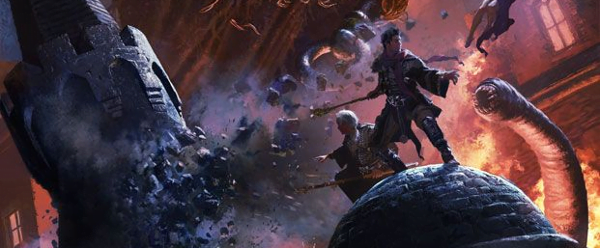
The book isn’t perfect, by any means – there is the aforementioned strangeness of the scope of the stories it wants to tell, and even one of these apocalyptic horrors being sealed away in a setting may change the fundamental optimism of a world. Much of the ‘old history’ of these creatures tie into questions of fundamental universal metaphysics, and you may not want to answer those questions. There’s also a flat out editing error – a feat is reproduced without its list of effects, resulting in an odd ‘see below’ that goes nowhere.
Yet, despite that, if you play in a heroic fantasy setting, of any degree of -punkness, I want to recommend you get your hands on a copy of Elder Evils, because the flavour, the idea, the structure of the plots, are all excellent ways to show different massive threats to a story, and are all wrought with a deliberate, exceptional creepiness.
Pop open a book and wonder about the things that might end your world – and what kind of people you want to stand in its way.
